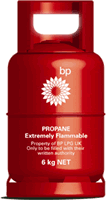|
The alkanes are the simplest of the hydrocarbons, consisting of carbon, hydrogen and single bonds only. Chemically, although they are fairly unreactive, they are flammable and used in many applications as a readily available source of heat and energy. They are obtained from the petrochemicals industry by fractional distillation of crude oil and cracking. |

|
Structural features
Alkanes are the simplest of the hydrocarbons, comprising carbon and hydrogen chains with only single bonds. The alkanes have no functional groups and only single bonds. This means that they are relatively unreactive, due to the strength of the carbon-carbon and the carbon-hydrogen bonds.
- carbon-carbon bond = 348 kJ mol-1
- carbon-hydrogen bond = 412 kJ mol-1
Another factor that contributes to the low reactivity of the alkanes is their lack of polarity. The electronegativity of carbon and hydrogen is similiar and the electrons are shared evenly between them in single bonds. No dipoles are formed, meaning that there are no regions of partial positive, or negative charge on the hydrocarbon chain that can invite attack by nucleophiles or electrophiles.
Combustion
Like most organic compounds, alkanes burn in air, or oxygen, giving carbon dioxide and water:
| CH4 + 2O2 |
When the supply of oxygen is insufficient, carbon monoxide and microparticulates of carbon may also be formed. This is called incomplete combustion.
|
Carbon monoxide is an odourless, colourless, toxic gas that poisons by replacing the oxygen molecules in the haemoglobin units of the red blood corpuscles, preventing oxygen reaching the brain. Symptoms are drowsiness, coma and death. For this reason, gas appliances must be regularly checked to ensure good air flow. |
Combustion reactions proceed via a free radical mechanism, obviating the high activation energy needed to break the C-C and O-H bonds.
Halogenation
In the presence of ultraviolet light, the alkanes react with halogens via a free radical mechanism. Free radical processes are chain reactions that proceed in three stages:
- 1 Initiation
- 2 Propagation
- 3 Termination
In the initiation stage, chlorine molecules are broken into free radicals by the UV light.
| Cl2 |
In the propagation stage the chlorine free radicals react with the alkane, making alkyl free radicals and hydrogen chloride.
| Cl |
The alkyl free radical can then react with another chlorine molecule, making a haloalkane and propagating the reaction further:
The chloride free radical can then react with another alkane molecule and continue the process.
The final stage in a free radical reaction is termination, when two free radicals collide to end the chain reaction:
| Cl |
Although this reaction proceeds easily, it is of limited use in synthesis, as a mixture of products is formed. Free radicals react with the first molecule that they encounter, meaning that several by-products are also formed. To try to limit the number of by-products, the gases are mixed in an appropriate ratio, according to the stoichiometry of the equation. In the case of the reaction between methane and chlorine in the presence of ultraviolet light, the equation is:
| CH4 + Cl2 |
The stoichiometry of the reaction suggests that the ideal molar ratio of chlorine to methane is 1:1
|
|
Cracking
Cracking is a very important process in the petrochemicals industry, as the products are a mixture of hydrogen, alkanes and alkenes. The hydrogen is used in further processes, the alkanes may be purified or further cracked, and the alkenes are important feedstock chemicals for many industrial processes.
There are two types of cracking:
- 1 Thermal cracking
- 2 Catalytic cracking
In both cracking processes, the alkane or alkanes mixture is passed over a very hot surface, where the energy breaks the carbon-carbon bonds and the carbon-hydrogen bonds at random. The actual products depend upon the alkanes and exact conditions used.
|
|
Cracking can be demonstrated in the laboratory using a liquid alkane, such as hexane, and plain ordinary house brick as a catalytic surface.
The heat travels through the test tube until the hexane vaporises when it is forced to pass over the hot brick. It then cracks into smaller alkenes and alkanes, and perhaps a little hydrogen. The products are random, but must add up to the original hexane.
To write an equation for a cracking process, it is simply a question of making sure that you have not lost or gained any atoms.
|
C5H12 pentane |
There is no single correct way to write a cracking equation, rather there are many possibilties.

